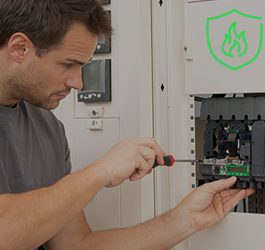This audio was created using Microsoft Azure Speech Services
In data centers, where an organization’s entire digital infrastructures operates, close attention to fire safety is a must. Every procedure should include fire-safety considerations that are followed every time. Here are five things to keep in mind:
1) Use caution around flammable materials. Things that seem innocuous — boxes and other packaging items, for example — can pose a fire hazard. Experts recommend using staging areas, or “breakdown rooms,” where equipment is removed from boxes and unwrapped before it ever enters the actual data center. This eliminates many potentially hazardous materials from ever reaching the data center. Any flammable materials that do need to be in the data center should be stored in fire-retardant cabinets.
2) Create multiple power rooms.
Many data centers have a single power room to house electrical buses, including back-up, or “catcher” buses. In the event of a fire, and the use of water to fight a blaze, it’s likely the water could shut down an entire room. Smoke also can dictate a complete power room shut down, in turn shutting down the entire data center. Experts recommend, if at all possible, to have each bus in a separate room with its own emergency power off (EPO) switch. The uninterruptible power supply (UPS) for each bus would also be in its own room.
3) Regularly inspect and maintain all fire-safety systems.
Following a regular service and inspection routine for all fire-prevention systems and equipment ensures they remain operational.
4) Monitor changes within the facility as a whole. Facility renovations and upgrades can affect how a fire-safety system could interact with data center equipment. One such example? More sophisticated computer equipment could require containment strategies to keep the data center at an appropriate temperature. The equipment, such as screens to contain a hot or cold aisle, could have an effect on sprinkler and fire-suppression-system discharge patterns. Thus, changes not only drive facility design but also fire-safety considerations.
5) Prepare for the worst.
Facilities professionals and data center managers need to be prepared for a fire. A solid emergency plan informs local firefighters about the building. It’s also essential to let them know how the data center operates to help first responders understand that fire hoses aren’t always the best solution in this space.
Click here to learn more about fire safety and prevention in data centers.



